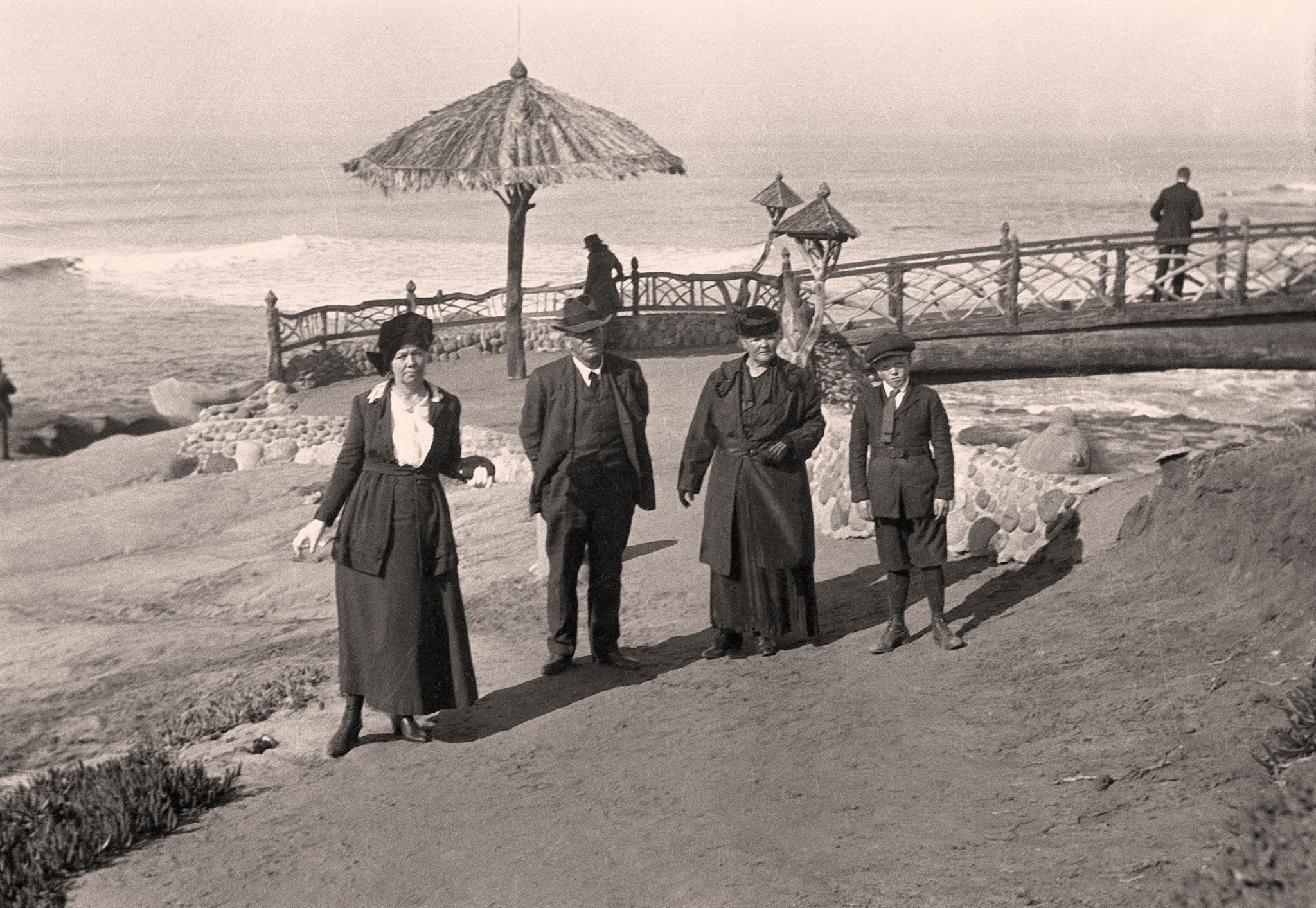
Spalding Park
About Spalding Park
Since our original posting of the Rum Runners Cave there have been a number of comments seeking to prove it was a Prohibition-era booze smuggling center and others refuting that claim. While it may never be known exactly what went on here during those years, the truth appears to be that what remains here are remnants of an amazing construction project undertaken by a world famous figure that is rarely associated with San Diego.
 His name was Albert Spalding, and he had several distinct chapters in his life, any of which would have made him famous. He was born in 1850 in Byron Illinois, and early on developed an affinity for the nascent sport of baseball.
His name was Albert Spalding, and he had several distinct chapters in his life, any of which would have made him famous. He was born in 1850 in Byron Illinois, and early on developed an affinity for the nascent sport of baseball.
While still in his mid-teens, he starred for a local team that defeated a traveling team of professional players. When the first professional league was formed in 1871, Spalding was hired to play for the Boston Red Stockings (the current day Atlanta Braves).
His playing career was a relatively brief seven years but it was highly successful. In those early years of professional baseball, Spalding was the first pitcher to reach a total of 50, 100, 150 and 200 wins.
He had personal streaks of 22 and 24 wins in a row. For his career, he posted a pitching won-lost record of 252-65. His winning percentage of .795 is the highest in major league history. He was also an accomplished hitter, finishing with a lifetime batting average of .313.
While his playing career was winding down, Spalding embarked on the second major chapter in his life by partnering with his brother to open a sporting goods business in Chicago. In a stroke of advertising genius, he paid the National League to use his Spalding brand baseballs, and sold them to everyone else as the “official ball” of the professional league.
He soon expanded into bat manufacturing, and was reportedly making a million bats per  year by 1887. Eventually the Spaldings branched into other sporting goods and the company ultimately made and sold equipment lines for tennis, golf, fishing, biking, tennis and basketball in addition to baseball. They made athletic uniforms for most sports. By 1896 the Spaldings employed 3,500 people.
year by 1887. Eventually the Spaldings branched into other sporting goods and the company ultimately made and sold equipment lines for tennis, golf, fishing, biking, tennis and basketball in addition to baseball. They made athletic uniforms for most sports. By 1896 the Spaldings employed 3,500 people.
Having established lifetime wealth through sporting goods manufacture and sale, Spalding began the third chapter of his professional life at the age of 31 as the owner of the Chicago White Stockings (who ultimately evolved into today’s Chicago Cubs).
In the years he owned the team they won five pennants and finished second four more times.
The final passion of Spalding’s life was the creation of spectacular enhancements to the beauty of Sunset Cliffs. He hired Japanese architects to design his “Spalding Park” and spent a total of $2 million on the project (the equivalent of $47 million in today’s dollars). His creation was spectacular.
There were sheltered benches with stunning views of the ocean. There were two sets of cobblestone steps that led from Adair Street down to the rocks in which he had carved a 750 square foot salt water swimming pool. He included a dressing room at the top of the cliff for users of the pool. There were also walkways above the cliffs with hand rails.
Spalding Park turned out to be the final achievement of Spalding’s remarkable life. He died of a stroke in San Diego in 1915, a week after his 66th birthday. He was cremated and his ashes were scattered around Point Loma.












Anonymous
Absolutely love and appreciate these kind of historical stories!
Thanks for the research, and also for your stories on SD hiking trails….much appreciated
Anonymous
Where is this place exactly!!! I really want to go
Anonymous
I lived and grew up in Ocean beach Ca off of bacon st. And never in my life have i ever heard of this. Why didnt they tell us about that in school ( thanks OB Elementry Correia Jr high and Point Loma high). That would of been intresting to learn.
Anonymous
@Anonymous,
It’s not there anymore.
Anonymous
Amazing stuff..
Anonymous
The main reason for Spaulding’s move to San Diego was the Theosophyical Society, of which he became a major player. Both the San Diego History Center and San Diego State have exhibits going on about this weird, cultish organization right now.
Pingback: HIDDEN GEMS OF POINT LOMA | Hidden San Diego